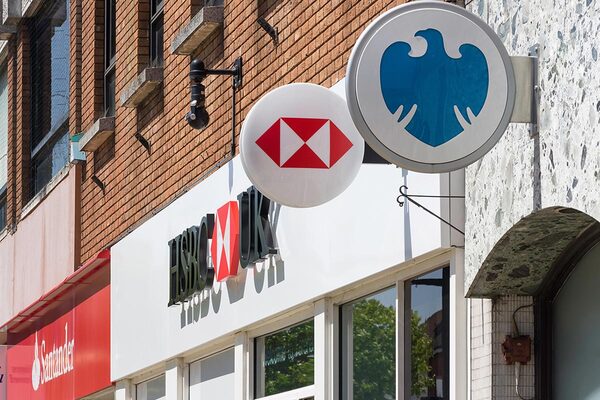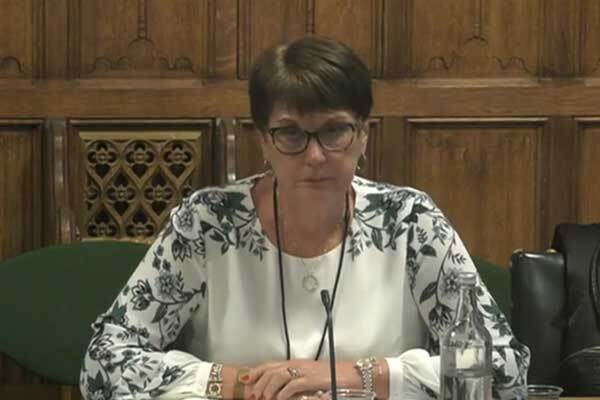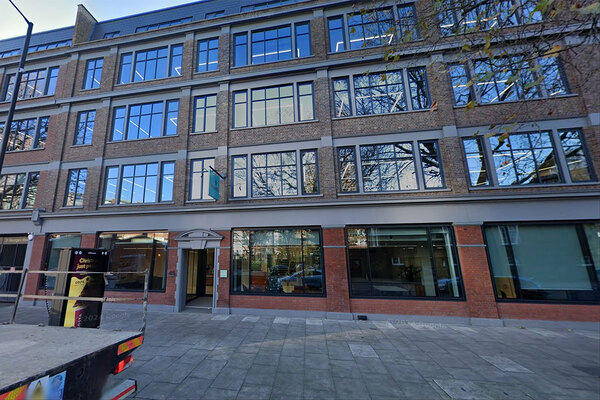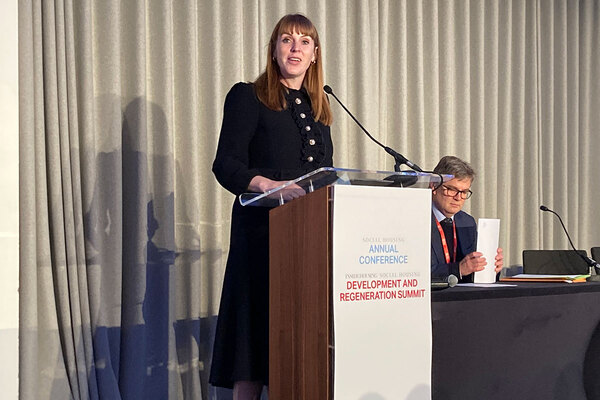You are viewing 1 of your 1 free articles
Revealed: banks yet to commit to mortgages on cladding-hit blocks with remediation plans
The majority of major banks are still yet to commit to providing on residential blocks with remediation plans in place, despite an agreement six months ago to move to this position.
Inside Housing has contacted the country’s 10 biggest mortgage providers across the country to see whether they had changed their approach regarding lending on building with dangerous materials, if a remediation plan was in place.
Of the eight that responded four said they had yet to change their policy regarding blocks with dangerous materials, while four said they would be adopting a case-by-case approach with strict requirements on the evidence needed (see full responses).
In March this year, UK Finance – the body representing banks – and the Building Societies Association released an update which stated that the industry was taking “necessary steps” to facilitate lending on a property if a plan to replace dangerous materials had been set out.
At the time, UK Finance announced that six major banks signed up to the agreement, which were: Barclays, HSBC, Lloyds, Nationwide, NatWest and Santander.
This was followed in July by a statement in which UK Finance stated that following the publication of the Building Safety Act, lenders should lend for flats in blocks where remediation is either covered by a government funding scheme, or a developer has confirmed it will self-remediate the block.
However, the majority of banks have yet to commit fully to lending on these types of buildings. Of the major banks, Nationwide, HSBC and TSB were open to lending on properties with dangerous materials, but all had strict conditions regarding what was needed.
Nationwide said that if a building received an A3 or B2 EWS rating, indicating the need for remediation, it would need confirmation of a clear path to the building being remediated, and this would need to include an outline of the cost of works and who is paying for them. It added that this remediation would need to be covered by the government or developer remediation scheme.
HSBC said it would work on a case-by-case basis where there is fully-funded remediation plan in place and would currently assess each case individually on its merits given the evidence provided.
TSB stated that it would be willing to lend if there were planned and funded remediation plans and set to take place within six months of the money being lent. It would also need to see a letter from the developer or building manager confirming details of the block, costing for the remediation work, and a start and end date.
Yorkshire Building Society will continue to lend on EWS forms that show no need for remediation, but said for other blocks the resolution is “complex” and it would need a lot more supporting information to understand whether it would be able to lend.
All other banks are yet to accept mortgage applications for flats in buildings with dangerous materials, even if they have a plan in place. Coventry Building Society, Virgin Money, NatWest and Santander all said that their policy was still not to lend on buildings with dangerous materials that had been deemed to need remediation by an EWS checks.
Santander said that it was working through the various provisions of the Building Safety Act and implications for customers and would be updating the market on changes to cladding requirements in the coming months.
NatWest said that it hadn’t changed its policy and was working with stakeholders such as the Royal Institution of Chartered Surveyors (RICS) and UK Finance to progress towards the intent laid out by the government. It added: “At this point we are in the hands of central policymakers to be able to proceed further.”
Virgin Money said that it would continue to work with stakeholders such as RICS, the government and UK Finance but said that it would only review its policies once actions as stated by the UK Finance in early September were progressed.
In early September, John Marr, principal for devolved government and social housing at UK Finance, wrote in a piece on the body’s website that while banks had commitments to lending on buildings in need of remediation, the sector was waiting on three actions before they could fully push ahead.
The first of these was for RICS to launch and confirm a framework for surveyors on how to value flats with dangerous materials that are set to be fixed. Last week, a consultation was launched on new guidance aimed at helping with the valuation of flats with safety defects, which is expected to close on the 31 October.
However, the remaining two have yet to be completed. UK Finance has also said that it is waiting on developers to sign contracts committing them to remediate life-critical works in all buildings they have built in the past 30 years in England.
The majority of large developers have signed a pledge highlighting their intention to commit to this, but despite warnings in early July from the government that these needed to be signed within a month, developers have yet to sign.
The final requirement from UK Finance is also waiting for the government to produce data about the remediation of plans being funded across the country, which it says will help with valuations and mortgage decisions.
There are also huge questions around the effectiveness of the government’s Building Safety Fund, with long-standing delays to applications and issues around blocks receiving confirmation of funding by the government.
Campaigners have criticised the lack of movement so far, saying that despite previous announcements in mid-July being trumpeted as “game-changers”, very little has changed on the ground.
Giles Grover from End Our Cladding Scandal, said: “Lending will remain beset by uncertainty until the government ensures all remediation schemes are operational and the numerous gaps in protection that still exist are resolved fairly.
“Until then, innocent leaseholders across the country are still trapped in unsafe and unsellable homes, still unable to remortgage and still left in limbo.
“The next step on the housing ladder remains out of reach. We remain some way off seeing tangible change and the relief and protection the new housing secretary, Simon Clarke, recently said we deserve.”
Inside Housing has contacted the Department for Levelling Up, Housing and Communities for comment, as well as Lloyds and Barclays.
The banks’ full responses to questions on lending positions
HSBC
What is your current policy regarding when you need an EWS1 form? Do you require them on buildings of all heights?
In the current policy, we would require EWS1, as required per the RICS guidance. HSBC UK is working closely with UK Finance, DLUHC and RICS to update policy in light of the new funding schemes made available.
Do you have any rules around when an EWS1 form isn’t required?
Yes, where the property does not fall into the policy, ie less than four storeys and no ACM, MCM or HPL cladding on the building.
Do you lend on buildings with an A3 or B2 rating in any scenarios?
We will consider this on a case-by-case basis where there is a fully-funded remediation plan in place and this can be evidenced.
Will the bank lend on a property with dangerous materials if there is a remediation plan in place?
We will consider this on a case-by-case basis where there is a fully-funded remediation plan in place and this can be evidenced.
What evidence is required by the bank around a remediation plan for you to lend on a property still with dangerous materials on it?
We continue to work with industry experts on providing clarity on evidential requirements. In the meantime, each case will be assessed individually on its merits.
Nationwide
What is your current policy regarding when you need an EWS1 form? Do you require them on buildings of all heights?
Nationwide will only request an EWS1 form in the limited circumstances when there are significant concerns over remediation costs and human safety, irrespective of the height of the building. By way of context, we request such forms on less than 0.5% of total applications and, of that small number, fire engineers are finding defects that need remediation in the majority.
This requirement will reduce once the relevant parts of the Fire Safety Act are implemented and building owners have started to perform all the relevant safety checks as part of the fire risk assessment. The removal of the Consolidated Advice Note and publishing of PAS 9980 was welcomed by the Society at the time and was the next step on this journey.
Do you have any rules around when an EWS1 form isn’t required?
See above.
Do you lend on buildings with an A3 or B2 rating in any scenarios?
If a property had an EWS1 form with a rating of A3 or B2, we would need confirmation that there is a clear path to the building being remediated, an outline of the cost of the works and who is paying for them. Assuming that is all confirmed, we would lend on the property, subject to our normal lending policy and checks.
Will the bank lend on a property with dangerous materials if there is a remediation plan in place?
Nationwide will lend to leaseholders living in properties impacted by cladding, where those properties are covered by the government or developer remediation schemes – subject to our normal lending policy and checks.
What evidence is required by the bank around a remediation plan for you to lend on a property still with dangerous materials on it?
We would need confirmation that there is a clear path to the building being remediated, an outline of the cost of the works and who is paying for them. Assuming that is all confirmed in writing, we would lend on the property, subject to our normal lending policy and checks. However, while that confirmation is being received, we would also need assurance that there are adequate interim safety measures in place.
Virgin Money
What is your current policy regarding when you need an EWS1 form? Do you require them on buildings of all heights?
For new lending applications, the bank’s valuers will advise when a completed [EWS1 form] will be required in line with RICS guidance. This form will confirm that the EWS has been assessed for safety by a suitable expert. Where a valuer has fire safety concerns with a building, the property will be declined until we or our valuers have seen an acceptable EWS1 form.
Do you have any rules around when an EWS1 form isn’t required?
The bank’s valuers will advise when a completed [EWS1 form] will be required in line with RICS guidance. This form will confirm that the EWS has been assessed for safety by a suitable expert. Where a valuer has fire safety concerns with a building, the property will be declined until we or our valuers have seen an acceptable EWS1 form.
Do you lend on buildings with an A3 or B2 rating in any scenarios?
Will the bank lend on a property with dangerous materials if there is a remediation plan in place?
What evidence is required by the bank around a remediation plan for you to lend on a property still with dangerous materials on it?
Virgin Money is committed to continue working with all parties (UK Finance, RICS, Government, Home Builders Federation) and we continually review our policies as a responsible lender. Once the actions as stated by UK Finance on 06/09/22 are progressed, a full review of our current policies will be undertaken.
TSB
What is your current policy regarding when you need an EWS1 form? Do you require them on buildings of all heights?
We continue to be advised by third-party RICS surveyors who work to the latest RICS guidance, and we will request an EWS1 when this is their recommendation.
Do you have any rules around when an EWS1 form isn’t required?
If the remedial works to make a block safe have been planned, funded and are due to commence within the next six months, we may be able to proceed to offer, provided written commitment can be provided. For us to proceed under these circumstances, we require a letter from the developer/building manager which confirms:
The block/building details and address
That remediation has been costed and the necessary funding is in place
The start date of repairs
The end date of repairs
Do you lend on buildings with an A3 or B2 rating in any scenarios?
See answer to Q2 above.
Will the bank lend on a property with dangerous materials if there is a remediation plan in place?
As per response to Q2.
What evidence is required by the bank around a remediation plan for you to lend on a property still with dangerous materials on it?
See evidence as noted in Q2 above.
Coventry Building Society
What is your current policy regarding when you need an EWS1 form?
Where the property is in a multi-storey, multi-occupancy residential building (flats) with external wall systems (cladding) or external wall attachments (eg balconies), these are subject to review by our valuers who will use the RICS guidance (April 2021) on cladding.
Do you require them on buildings of all heights?
Our general policy when lending on flats is that we accept flats within blocks of up to 10 storeys in height (up to five storeys if ex-local authority/housing association).
If cladding or balconies are identified on such a building, our valuers will use the RICS guidance (relevant excerpt below) to determine whether an EWS1 form is required.
Do you have any rules around when an EWS1 form isn’t required?
As above, our valuers use the latest RICS guidance on cladding to determine whether or not an EWS1 form is required.
Do you lend on buildings with an A3 or B2 rating in any scenarios?
Where the valuer has noted that option A3 or B2 has been selected, or no EWS1 form is available, the case will be declined.
Will the bank lend on a property with dangerous materials if there is a remediation plan in place?
We will not accept applications on properties that have been assessed as A3 or B2. Also, we will not accept applications where a property is undergoing remediation in respect of fire safety issues with the external wall systems or attachments; works must be completed prior to application.
What evidence is required by the bank around a remediation plan for you to lend on a property still with dangerous materials on it?
Not applicable.
Santander
“We are working through the various provisions in the Building Safety Act and the implications for our customers. We will update the market on changes to our cladding requirements in the coming months.”
Natwest
"We haven’t changed position on this recently. We are working with UK government, UK Finance and RICS to progress towards the intent laid out by the government. At this point, we are in the hands of central policymakers to be able to proceed further.”
Yorkshire Building Society
“As we’ve always done, we’ll continue to rely on our valuers to decide when they feel an EWS1 form would be appropriate, so that they can avoid asking for them unnecessarily, while also not passing responsibility for any significant fire risks on to potential purchasers who might not be aware of the full extent of the risks.
“We’ll continue to lend where EWS1 forms show no remediation is necessary, but where this isn’t the case, the resolution process is still complex and we’d need a lot more supporting information to understand whether we’d be able to lend.”












